Neuroscience
Neuroscience (or neurobiology) is the scientific study of the nervous system.[1] It combines physiology, anatomy, molecular biology, developmental biology, cytology, mathematical modeling, and psychology to understand the fundamental and emergent properties of neurons and neural circuits.[2][3][4][5][6] The understanding of the biological basis of learning, memory, behavior, perception, and consciousness has been described by Eric Kandel as the "ultimate challenge" of the biological sciences.[7]
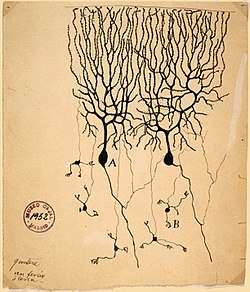
The scope of neuroscience has broadened over time to include different approaches used to study the nervous system at different scales and the techniques used by neuroscientists have expanded enormously, from molecular and cellular studies of individual neurons to imaging of sensory, motor and cognitive tasks in the brain.
History

The earliest study of the nervous system dates to ancient Egypt. Trepanation, the surgical practice of either drilling or scraping a hole into the skull for the purpose of curing head injuries or mental disorders, or relieving cranial pressure, was first recorded during the Neolithic period. Manuscripts dating to 1700 BC indicate that the Egyptians had some knowledge about symptoms of brain damage.[8]
Early views on the function of the brain regarded it to be a "cranial stuffing" of sorts. In Egypt, from the late Middle Kingdom onwards, the brain was regularly removed in preparation for mummification. It was believed at the time that the heart was the seat of intelligence. According to Herodotus, the first step of mummification was to "take a crooked piece of iron, and with it draw out the brain through the nostrils, thus getting rid of a portion, while the skull is cleared of the rest by rinsing with drugs."[9]
The view that the heart was the source of consciousness was not challenged until the time of the Greek physician Hippocrates. He believed that the brain was not only involved with sensation—since most specialized organs (e.g., eyes, ears, tongue) are located in the head near the brain—but was also the seat of intelligence.[10] Plato also speculated that the brain was the seat of the rational part of the soul.[11] Aristotle, however, believed the heart was the center of intelligence and that the brain regulated the amount of heat from the heart.[12] This view was generally accepted until the Roman physician Galen, a follower of Hippocrates and physician to Roman gladiators, observed that his patients lost their mental faculties when they had sustained damage to their brains.[13]
Abulcasis, Averroes, Avicenna, Avenzoar, and Maimonides, active in the Medieval Muslim world, described a number of medical problems related to the brain. In Renaissance Europe, Vesalius (1514–1564), René Descartes (1596–1650), Thomas Willis (1621–1675) and Jan Swammerdam (1637–1680) also made several contributions to neuroscience.
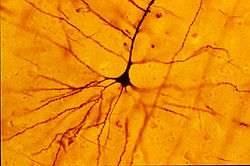
Luigi Galvani's pioneering work in the late 1700s set the stage for studying the electrical excitability of muscles and neurons. In the first half of the 19th century, Jean Pierre Flourens pioneered the experimental method of carrying out localized lesions of the brain in living animals describing their effects on motricity, sensibility and behavior. In 1843 Emil du Bois-Reymond demonstrated the electrical nature of the nerve signal,[14] whose speed Hermann von Helmholtz proceeded to measure,[15] and in 1875 Richard Caton found electrical phenomena in the cerebral hemispheres of rabbits and monkeys.[16] Adolf Beck published in 1890 similar observations of spontaneous electrical activity of the brain of rabbits and dogs.[17] Studies of the brain became more sophisticated after the invention of the microscope and the development of a staining procedure by Camillo Golgi during the late 1890s. The procedure used a silver chromate salt to reveal the intricate structures of individual neurons. His technique was used by Santiago Ramón y Cajal and led to the formation of the neuron doctrine, the hypothesis that the functional unit of the brain is the neuron.[18] Golgi and Ramón y Cajal shared the Nobel Prize in Physiology or Medicine in 1906 for their extensive observations, descriptions, and categorizations of neurons throughout the brain.
In parallel with this research, work with brain-damaged patients by Paul Broca suggested that certain regions of the brain were responsible for certain functions. At the time, Broca's findings were seen as a confirmation of Franz Joseph Gall's theory that language was localized and that certain psychological functions were localized in specific areas of the cerebral cortex.[19][20] The localization of function hypothesis was supported by observations of epileptic patients conducted by John Hughlings Jackson, who correctly inferred the organization of the motor cortex by watching the progression of seizures through the body. Carl Wernicke further developed the theory of the specialization of specific brain structures in language comprehension and production. Modern research through neuroimaging techniques, still uses the Brodmann cerebral cytoarchitectonic map (referring to study of cell structure) anatomical definitions from this era in continuing to show that distinct areas of the cortex are activated in the execution of specific tasks.[21]
During the 20th century, neuroscience began to be recognized as a distinct academic discipline in its own right, rather than as studies of the nervous system within other disciplines. Eric Kandel and collaborators have cited David Rioch, Francis O. Schmitt, and Stephen Kuffler as having played critical roles in establishing the field.[22] Rioch originated the integration of basic anatomical and physiological research with clinical psychiatry at the Walter Reed Army Institute of Research, starting in the 1950s. During the same period, Schmitt established a neuroscience research program within the Biology Department at the Massachusetts Institute of Technology, bringing together biology, chemistry, physics, and mathematics. The first freestanding neuroscience department (then called Psychobiology) was founded in 1964 at the University of California, Irvine by James L. McGaugh.[23] This was followed by the Department of Neurobiology at Harvard Medical School, which was founded in 1966 by Stephen Kuffler.[24]
The understanding of neurons and of nervous system function became increasingly precise and molecular during the 20th century. For example, in 1952, Alan Lloyd Hodgkin and Andrew Huxley presented a mathematical model for transmission of electrical signals in neurons of the giant axon of a squid, which they called "action potentials", and how they are initiated and propagated, known as the Hodgkin–Huxley model. In 1961–1962, Richard FitzHugh and J. Nagumo simplified Hodgkin–Huxley, in what is called the FitzHugh–Nagumo model. In 1962, Bernard Katz modeled neurotransmission across the space between neurons known as synapses. Beginning in 1966, Eric Kandel and collaborators examined biochemical changes in neurons associated with learning and memory storage in Aplysia. In 1981 Catherine Morris and Harold Lecar combined these models in the Morris–Lecar model. Such increasingly quantitative work gave rise to numerous biological neuron models and models of neural computation.
As a result of the increasing interest about the nervous system, several prominent neuroscience organizations have been formed to provide a forum to all neuroscientist during the 20th century. For example, the International Brain Research Organization was founded in 1961,[25] the International Society for Neurochemistry in 1963,[26] the European Brain and Behaviour Society in 1968,[27] and the Society for Neuroscience in 1969.[28] Recently, the application of neuroscience research results has also given rise to applied disciplines as neuroeconomics,[29] neuroeducation,[30] neuroethics,[31] and neurolaw.[32]
Over time, brain research has gone through philosophical, experimental, and theoretical phases, with work on brain simulation predicted to be important in the future.[33]
Modern neuroscience
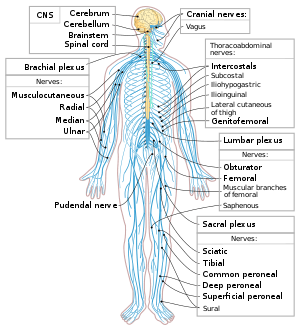
The scientific study of the nervous system increased significantly during the second half of the twentieth century, principally due to advances in molecular biology, electrophysiology, and computational neuroscience. This has allowed neuroscientists to study the nervous system in all its aspects: how it is structured, how it works, how it develops, how it malfunctions, and how it can be changed.
For example, it has become possible to understand, in much detail, the complex processes occurring within a single neuron. Neurons are cells specialized for communication. They are able to communicate with neurons and other cell types through specialized junctions called synapses, at which electrical or electrochemical signals can be transmitted from one cell to another. Many neurons extrude a long thin filament of axoplasm called an axon, which may extend to distant parts of the body and are capable of rapidly carrying electrical signals, influencing the activity of other neurons, muscles, or glands at their termination points. A nervous system emerges from the assemblage of neurons that are connected to each other.
The vertebrate nervous system can be split into two parts: the central nervous system (defined as the brain and spinal cord), and the peripheral nervous system. In many species — including all vertebrates — the nervous system is the most complex organ system in the body, with most of the complexity residing in the brain. The human brain alone contains around one hundred billion neurons and one hundred trillion synapses; it consists of thousands of distinguishable substructures, connected to each other in synaptic networks whose intricacies have only begun to be unraveled. At least one out of three of the approximately 20,000 genes belonging to the human genome is expressed mainly in the brain.[34]
Due to the high degree of plasticity of the human brain, the structure of its synapses and their resulting functions change throughout life.[35]
Making sense of the nervous system's dynamic complexity is a formidable research challenge. Ultimately, neuroscientists would like to understand every aspect of the nervous system, including how it works, how it develops, how it malfunctions, and how it can be altered or repaired. Analysis of the nervous system is therefore performed at multiple levels, ranging from the molecular and cellular levels to the systems and cognitive levels. The specific topics that form the main foci of research change over time, driven by an ever-expanding base of knowledge and the availability of increasingly sophisticated technical methods. Improvements in technology have been the primary drivers of progress. Developments in electron microscopy, computer science, electronics, functional neuroimaging, and genetics and genomics have all been major drivers of progress.
Molecular and cellular neuroscience
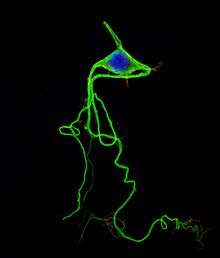
Basic questions addressed in molecular neuroscience include the mechanisms by which neurons express and respond to molecular signals and how axons form complex connectivity patterns. At this level, tools from molecular biology and genetics are used to understand how neurons develop and how genetic changes affect biological functions. The morphology, molecular identity, and physiological characteristics of neurons and how they relate to different types of behavior are also of considerable interest.
Questions addressed in cellular neuroscience include the mechanisms of how neurons process signals physiologically and electrochemically. These questions include how signals are processed by neurites and somas and how neurotransmitters and electrical signals are used to process information in a neuron. Neurites are thin extensions from a neuronal cell body, consisting of dendrites (specialized to receive synaptic inputs from other neurons) and axons (specialized to conduct nerve impulses called action potentials). Somas are the cell bodies of the neurons and contain the nucleus.
Another major area of cellular neuroscience is the investigation of the development of the nervous system. Questions include the patterning and regionalization of the nervous system, neural stem cells, differentiation of neurons and glia (neurogenesis and gliogenesis), neuronal migration, axonal and dendritic development, trophic interactions, and synapse formation.
Computational neurogenetic modeling is concerned with the development of dynamic neuronal models for modeling brain functions with respect to genes and dynamic interactions between genes.
Neural circuits and systems
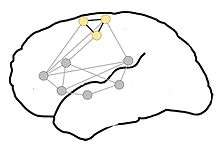
Questions in systems neuroscience include how neural circuits are formed and used anatomically and physiologically to produce functions such as reflexes, multisensory integration, motor coordination, circadian rhythms, emotional responses, learning, and memory. In other words, they address how these neural circuits function in large-scale brain networks, and the mechanisms through which behaviors are generated. For example, systems level analysis addresses questions concerning specific sensory and motor modalities: how does vision work? How do songbirds learn new songs and bats localize with ultrasound? How does the somatosensory system process tactile information? The related fields of neuroethology and neuropsychology address the question of how neural substrates underlie specific animal and human behaviors. Neuroendocrinology and psychoneuroimmunology examine interactions between the nervous system and the endocrine and immune systems, respectively. Despite many advancements, the way that networks of neurons perform complex cognitive processes and behaviors is still poorly understood.
Cognitive and behavioral neuroscience
Cognitive neuroscience addresses the questions of how psychological functions are produced by neural circuitry. The emergence of powerful new measurement techniques such as neuroimaging (e.g., fMRI, PET, SPECT), EEG, MEG, electrophysiology, optogenetics and human genetic analysis combined with sophisticated experimental techniques from cognitive psychology allows neuroscientists and psychologists to address abstract questions such as how cognition and emotion are mapped to specific neural substrates. Although many studies still hold a reductionist stance looking for the neurobiological basis of cognitive phenomena, recent research shows that there is an interesting interplay between neuroscientific findings and conceptual research, soliciting and integrating both perspectives. For example, the neuroscience research on empathy solicited an interesting interdisciplinary debate involving philosophy, psychology and psychopathology.[36] Moreover, the neuroscientific identification of multiple memory systems related to different brain areas has challenged the idea of memory as a literal reproduction of the past, supporting a view of memory as a generative, constructive and dynamic process.[37]
Neuroscience is also allied with the social and behavioral sciences as well as nascent interdisciplinary fields such as neuroeconomics, decision theory, social neuroscience, and neuromarketing to address complex questions about interactions of the brain with its environment. A study into consumer responses for example uses EEG to investigate neural correlates associated with narrative transportation into stories about energy efficiency.[38]
Computational neuroscience
Questions in computational neuroscience can span a wide range of levels of traditional analysis, such as development, structure, and cognitive functions of the brain. Research in this field utilizes mathematical models, theoretical analysis, and computer simulation to describe and verify biologically plausible neurons and nervous systems. For example, biological neuron models are mathematical descriptions of spiking neurons which can be used to describe both the behavior of single neurons as well as the dynamics of neural networks. Computational neuroscience is often referred to as theoretical neuroscience.
Nanoparticles in medicine are versatile in treating neurological disorders showing promising results in mediating drug transport across the blood brain barrier.[39] Implementing nanoparticles in antiepileptic drugs enhances their medical efficacy by increasing bioavailability in the bloodstream, as well as offering a measure of control in release time concentration.[39] Although nanoparticles can assist therapeutic drugs by adjusting physical properties to achieve desirable effects, inadvertent increases in toxicity often occur in preliminary drug trials.[40] Furthermore, production of nanomedicine for drug trials is economically consuming, hindering progress in their implementation. Computational models in nanoneuroscience provide alternatives to study the efficacy of nanotechnology-based medicines in neurological disorders while mitigating potential side effects and development costs.[39]
Nanomaterials often operate at length scales between classical and quantum regimes.[41] Due to the associated uncertainties at the length scales that nanomaterials operate, it is difficult to predict their behavior prior to in vivo studies.[39] Classically, the physical processes which occur throughout neurons are analogous to electrical circuits. Designers focus on such analogies and model brain activity as a neural circuit.[42] Success in computational modeling of neurons have led to the development of stereochemical models that accurately predict acetylcholine receptor-based synapses operating at microsecond time scales.[42]
Ultrafine nanoneedles for cellular manipulations are thinner than the smallest single walled carbon nanotubes. Computational quantum chemistry[43] is used to design ultrafine nanomaterials with highly symmetrical structures to optimize geometry, reactivity and stability.[41]
Behavior of nanomaterials are dominated by long ranged non-bonding interactions.[44] Electrochemical processes that occur throughout the brain generate an electric field which can inadvertently affect the behavior of some nanomaterials.[41] Molecular dynamics simulations can mitigate the development phase of nanomaterials as well as prevent neural toxicity of nanomaterials following in vivo clinical trials.[40] Testing nanomaterials using molecular dynamics optimizes nano characteristics for therapeutic purposes by testing different environment conditions, nanomaterial shape fabrications, nanomaterial surface properties, etc without the need for in vivo experimentation.[45] Flexibility in molecular dynamic simulations allows medical practitioners to personalize treatment. Nanoparticle related data from translational nanoinformatics links neurological patient specific data to predict treatment response.[44]
Nano-Neurotechnology
The visualization of neuronal activity is of key importance in the study of neurology. Nano-imaging tools with nanoscale resolution help in these areas. These optical imaging tools are PALM[46] and STORM[47] which helps visualize nanoscale objects within cells. Pampaloni states that, so far, these imaging tools revealed the dynamic behavior and organization of the actin cytoskeleton inside the cells, which will assist in understanding how neurons probe their involvement during neuronal outgrowth and in response to injury, and how they differentiate axonal processes and characterization of receptor clustering and stoichiometry at the plasma inside the synapses, which are critical for understanding how synapses respond to changes in neuronal activity.[48] These past works focused on devices for stimulation or inhibition of neural activity, but the crucial aspect is the ability for the device to simultaneously monitor neural activity. The major aspect that is to be improved in the nano imaging tools is the effective collection of the light as a major problem is that biological tissue are dispersive media that do not allow a straightforward propagation and control of light. These devices use nanoneedle and nanowire (NWs) for probing and stimulation.[46]
NWs are artificial nano- or micro-sized “needles” that can provide high-fidelity electrophysiological recordings if used as microscopic electrodes for neuronal recordings. NWs are an attractive as they are highly functional structures that offer unique electronic properties that are affected by biological/chemical species adsorbed on their surface; mostly the conductivity.[49][50] This conductivity variance depending on chemical species present allows enhanced sensing performances.[51] NWs are also able to act as non-invasive and highly local probes. These versatility of NWs makes it optimal for interfacing with neurons due to the fact that the contact length along the axon (or the dendrite projection crossing a NW) is just about 20 nm.[52]
Translational research and medicine
.gif)
Neurology, psychiatry, neurosurgery, psychosurgery, anesthesiology and pain medicine, neuropathology, neuroradiology, ophthalmology, otolaryngology, clinical neurophysiology, addiction medicine, and sleep medicine are some medical specialties that specifically address the diseases of the nervous system. These terms also refer to clinical disciplines involving diagnosis and treatment of these diseases.
Neurology works with diseases of the central and peripheral nervous systems, such as amyotrophic lateral sclerosis (ALS) and stroke, and their medical treatment. Psychiatry focuses on affective, behavioral, cognitive, and perceptual disorders. Anesthesiology focuses on perception of pain, and pharmacologic alteration of consciousness. Neuropathology focuses upon the classification and underlying pathogenic mechanisms of central and peripheral nervous system and muscle diseases, with an emphasis on morphologic, microscopic, and chemically observable alterations. Neurosurgery and psychosurgery work primarily with surgical treatment of diseases of the central and peripheral nervous systems.
Recently, the boundaries between various specialties have blurred, as they are all influenced by basic research in neuroscience. For example, brain imaging enables objective biological insight into mental illnesses, which can lead to faster diagnosis, more accurate prognosis, and improved monitoring of patient progress over time.[53]
Integrative neuroscience describes the effort to combine models and information from multiple levels of research to develop a coherent model of the nervous system. For example, brain imaging coupled with physiological numerical models and theories of fundamental mechanisms may shed light on psychiatric disorders.[54]
Nanoneuroscience and Medicine
One of the main goals of nanoneuroscience is to gain a detailed understanding of how the nervous system operates and, thus, how neurons organize themselves in the brain. Consequently, creating drugs and devices that are able to cross the blood brain barrier (BBB) are essential to allow for detailed imaging and diagnoses. The blood brain barrier functions as a highly specialized semipermeable membrane surrounding the brain, preventing harmful molecules that may be dissolved in the circulation blood from entering the central nervous system.
The main two hurdles for drug-delivering molecules to access the brain are size (must have a molecular weight < 400 Da) and lipid solubility.[55] Physicians hope to circumvent difficulties in accessing the central nervous system through viral gene therapy. This often involves direct injection into the patient’s brain or cerebral spinal fluid. The drawback of this therapy is that it is invasive and carries a high risk factor due to the necessity of surgery for the treatment to be administered. Because of this, only 3.6% of clinical trials in this field have progressed to stage III since the concept of gene therapy was developed in the 1980s.[56]
Another proposed way to cross the BBB is through temporary intentional disruption of the barrier. This method was first inspired by certain pathological conditions that were discovered to break down this barrier by themselves, such as Alzheimer’s disease, Parkinson’s disease, stroke, and seizure conditions.[55]
Nanoparticles are unique from macromolecules because their surface properties are dependent on their size, allowing for strategic manipulation of these properties (or, “programming”) by scientists that would not be possible otherwise. Likewise, nanoparticle shape can also be varied to give a different set of characteristics based on the surface area to volume ratio of the particle.[57]
Nanoparticles have promising therapeutic effects when treating neurodegenerative diseases. Oxygen reactive polymer (ORP) is a nano-platform programmed to react with oxygen and has been shown to detect and reduce the presence of reactive oxygen species (ROS) formed immediately after traumatic brain injuries.[58] Nanoparticles have also been employed as a “neuroprotective” measure, as is the case with Alzheimer’s disease and stroke models. Alzheimer’s disease results in toxic aggregates of the amyloid beta protein formed in the brain. In one study, gold nanoparticles were programmed to attach themselves to these aggregates and were successful in breaking them up.[59] Likewise, with ischemic stroke models, cells in the affected region of the brain undergo apoptosis, dramatically reducing blood flow to important parts of the brain and often resulting in death or severe mental and physical changes.[59] Platinum nanoparticles have been shown to act as ROS, serving as “biological antioxidants” and significantly reducing oxidation in the brain as a result of stroke.[59] Nanoparticles can also lead to neurotoxicity and cause permanent BBB damage either from brain oedema or from unrelated molecules crossing the BBB and causing brain damage.[58] This proves further long term in vivo studies are needed to gain enough understanding to allow for successful clinical trials.
One of the most common nano-based drug delivery platforms is liposome-based delivery. They are both lipid-soluble and nano-scale and thus are permitted through a fully functioning BBB. Additionally, lipids themselves are biological molecules, making them highly biocompatible, which in turn lowers the risk of cell toxicity. The bilayer that is formed allows the molecule to fully encapsulate any drug, protecting it while it is travelling through the body. One drawback to shielding the drug from the outside cells is that it no longer has specificity, and requires coupling to extra antibodies to be able to target a biological site. Due to their low stability, liposome-based nanoparticles for drug delivery have a short shelf life.[57]
Targeted therapy using magnetic nanoparticles (MNPs) is also a popular topic of research and has led to several stage III clinical trials.[60] Invasiveness is not an issue here because a magnetic force can be applied from the outside of a patient’s body to interact and direct the MNPs. This strategy has been proven successful in delivering Brain-derived neurotropic factor, a naturally occurring gene thought to promote neurorehabilitation, across the BBB.[58]
Major branches
Modern neuroscience education and research activities can be very roughly categorized into the following major branches, based on the subject and scale of the system in examination as well as distinct experimental or curricular approaches. Individual neuroscientists, however, often work on questions that span several distinct subfields.
| Branch | Description |
|---|---|
| Affective neuroscience | Affective neuroscience is the study of the neural mechanisms involved in emotion, typically through experimentation on animal models.[61] |
| Behavioral neuroscience | Behavioral neuroscience (also known as biological psychology, physiological psychology, biopsychology, or psychobiology) is the application of the principles of biology to the study of genetic, physiological, and developmental mechanisms of behavior in humans and non-human animals. |
| Cellular neuroscience | Cellular neuroscience is the study of neurons at a cellular level including morphology and physiological properties. |
| Clinical neuroscience | The scientific study of the biological mechanisms that underlie the disorders and diseases of the nervous system. |
| Cognitive neuroscience | Cognitive neuroscience is the study of the biological mechanisms underlying cognition. |
| Computational neuroscience | Computational neuroscience is the theoretical study of the nervous system. |
| Cultural neuroscience | Cultural neuroscience is the study of how cultural values, practices and beliefs shape and are shaped by the mind, brain and genes across multiple timescales.[62] |
| Developmental neuroscience | Developmental neuroscience studies the processes that generate, shape, and reshape the nervous system and seeks to describe the cellular basis of neural development to address underlying mechanisms. |
| Evolutionary neuroscience | Evolutionary neuroscience studies the evolution of nervous systems. |
| Molecular neuroscience | Molecular neuroscience studies the nervous system with molecular biology, molecular genetics, protein chemistry, and related methodologies. |
| Neural engineering | Neural engineering uses engineering techniques to interact with, understand, repair, replace, or enhance neural systems. |
| Neuroanatomy | Neuroanatomy is the study of the anatomy of nervous systems. |
| Neurochemistry | Neurochemistry is the study of how neurochemicals interact and influence the function of neurons. |
| Neuroethology | Neuroethology is the study of the neural basis of non-human animals behavior. |
| Neurogastronomy | Neurogastronomy is the study of flavor and how it affects sensation, cognition, and memory.[63] |
| Neurogenetics | Neurogenetics is the study of the genetical basis of the development and function of the nervous system. |
| Neuroimaging | Neuroimaging includes the use of various techniques to either directly or indirectly image the structure and function of the brain. |
| Neuroimmunology | Neuroimmunology is concerned with the interactions between the nervous and the immune system. |
| Neuroinformatics | Neuroinformatics is a discipline within bioinformatics that conducts the organization of neuroscience data and application of computational models and analytical tools. |
| Neurolinguistics | Neurolinguistics is the study of the neural mechanisms in the human brain that control the comprehension, production, and acquisition of language. |
| Neurophysics | Neurophysics deals with the development of physical experimental tools to gain information about the brain. |
| Neurophysiology | Neurophysiology is the study of the functioning of the nervous system, generally using physiological techniques that include measurement and stimulation with electrodes or optically with ion- or voltage-sensitive dyes or light-sensitive channels. |
| Neuropsychology | Neuropsychology is a discipline that resides under the umbrellas of both psychology and neuroscience, and is involved in activities in the arenas of both basic science and applied science. In psychology, it is most closely associated with biopsychology, clinical psychology, cognitive psychology, and developmental psychology. In neuroscience, it is most closely associated with the cognitive, behavioral, social, and affective neuroscience areas. In the applied and medical domain, it is related to neurology and psychiatry. |
| Paleoneurobiology | Paleoneurobiology is a field which combines techniques used in paleontology and archeology to study brain evolution, especially that of the human brain. |
| Social neuroscience | Social neuroscience is an interdisciplinary field devoted to understanding how biological systems implement social processes and behavior, and to using biological concepts and methods to inform and refine theories of social processes and behavior. |
| Systems neuroscience | Systems neuroscience is the study of the function of neural circuits and systems. |
Neuroscience organizations
The largest professional neuroscience organization is the Society for Neuroscience (SFN), which is based in the United States but includes many members from other countries. Since its founding in 1969 the SFN has grown steadily: as of 2010 it recorded 40,290 members from 83 different countries.[64] Annual meetings, held each year in a different American city, draw attendance from researchers, postdoctoral fellows, graduate students, and undergraduates, as well as educational institutions, funding agencies, publishers, and hundreds of businesses that supply products used in research.
Other major organizations devoted to neuroscience include the International Brain Research Organization (IBRO), which holds its meetings in a country from a different part of the world each year, and the Federation of European Neuroscience Societies (FENS), which holds a meeting in a different European city every two years. FENS comprises a set of 32 national-level organizations, including the British Neuroscience Association, the German Neuroscience Society (Neurowissenschaftliche Gesellschaft), and the French Société des Neurosciences. The first National Honor Society in Neuroscience, Nu Rho Psi, was founded in 2006.
In 2013, the BRAIN Initiative was announced in the US. An International Brain Initiative was created in 2017,[65] currently integrated by more than seven national-level brain research initiatives (US, Europe, Allen Institute, Japan, China, Australia, Canada, Korea, Israel)[66] spanning four continents.
Public education and outreach
In addition to conducting traditional research in laboratory settings, neuroscientists have also been involved in the promotion of awareness and knowledge about the nervous system among the general public and government officials. Such promotions have been done by both individual neuroscientists and large organizations. For example, individual neuroscientists have promoted neuroscience education among young students by organizing the International Brain Bee, which is an academic competition for high school or secondary school students worldwide.[67] In the United States, large organizations such as the Society for Neuroscience have promoted neuroscience education by developing a primer called Brain Facts,[68] collaborating with public school teachers to develop Neuroscience Core Concepts for K-12 teachers and students,[69] and cosponsoring a campaign with the Dana Foundation called Brain Awareness Week to increase public awareness about the progress and benefits of brain research.[70] In Canada, the CIHR Canadian National Brain Bee is held annually at McMaster University.[71]
Neuroscience educators formed Faculty for Undergraduate Neuroscience (FUN) in 1992 to share best practices and provide travel awards for undergraduates presenting at Society for Neuroscience meetings.[72]
Finally, neuroscientists have also collaborated with other education experts to study and refine educational techniques to optimize learning among students, an emerging field called educational neuroscience.[73] Federal agencies in the United States, such as the National Institute of Health (NIH)[74] and National Science Foundation (NSF),[75] have also funded research that pertains to best practices in teaching and learning of neuroscience concepts.
Nobel prizes related to neuroscience
| Year | Prize field | Image | Laureate | Lifetime | Country | Rationale | Ref |
|---|---|---|---|---|---|---|---|
| 1904 | Physiology |  |
Ivan Petrovich Pavlov | 1849–1936 | Russian Empire | "in recognition of his work on the physiology of digestion, through which knowledge on vital aspects of the subject has been transformed and enlarged" | [76] |
| 1906 | Physiology |  |
Camillo Golgi | 1843–1926 | Kingdom of Italy | "in recognition of their work on the structure of the nervous system" | [77] |
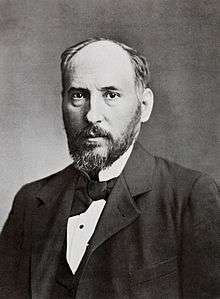 |
Santiago Ramón y Cajal | 1852–1934 | Restoration (Spain) | ||||
| 1914 | Physiology | 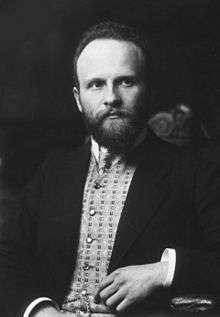 |
Robert Bárány | 1876–1936 | Austria-Hungary | "for his work on the physiology and pathology of the vestibular apparatus" | [78] |
| 1932 | Physiology | 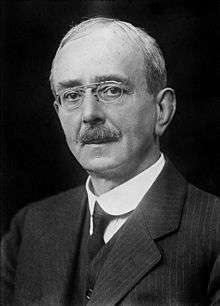 |
Charles Scott Sherrington | 1857–1952 | United Kingdom | "for their discoveries regarding the functions of neurons" | [79] |
 |
Edgar Douglas Adrian | 1889–1977 | United Kingdom | ||||
| 1936 | Physiology | 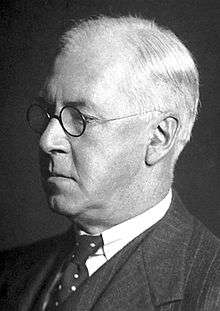 |
Henry Hallett Dale | 1875–1968 | United Kingdom | "for their discoveries relating to chemical transmission of nerve impulses" | [80] |
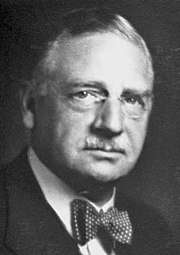 |
Otto Loewi | 1873–1961 | Austria Germany | ||||
| 1938 | Physiology | 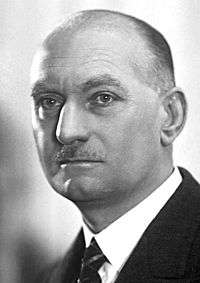 |
Corneille Jean François Heymans | 1892–1968 | Belgium | "for the discovery of the role played by the sinus and aortic mechanisms in the regulation of respiration" | [81] |
| 1944 | Physiology |  |
Joseph Erlanger | 1874–1965 | United States | "for their discoveries relating to the highly differentiated functions of single nerve fibres" | [82] |
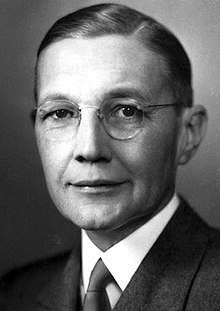 |
Herbert Spencer Gasser | 1888–1963 | United States | ||||
| 1949 | Physiology | 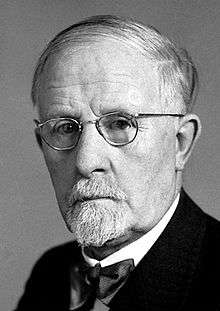 |
Walter Rudolf Hess | 1881–1973 | Switzerland | "for his discovery of the functional organization of the interbrain as a coordinator of the activities of the internal organs" | [83] |
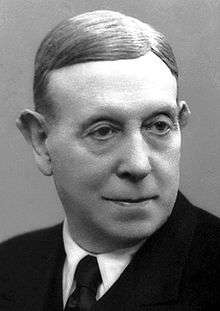 |
António Caetano Egas Moniz | 1874–1955 | Portugal | "for his discovery of the therapeutic value of leucotomy in certain psychoses" | [83] | ||
| 1957 | Physiology |  |
Daniel Bovet | 1907–1992 | Italy | "for his discoveries relating to synthetic compounds that inhibit the action of certain body substances, and especially their action on the vascular system and the skeletal muscles" | [84] |
| 1961 | Physiology |  |
Georg von Békésy | 1899–1972 | United States | "for his discoveries of the physical mechanism of stimulation within the cochlea" | [85] |
| 1963 | Physiology | 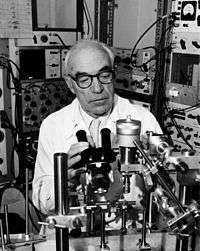 |
John Carew Eccles | 1903–1997 | Australia | "for their discoveries concerning the ionic mechanisms involved in excitation and inhibition in the peripheral and central portions of the nerve cell membrane" | [86] |
 |
Alan Lloyd Hodgkin | 1914–1998 | United Kingdom | ||||
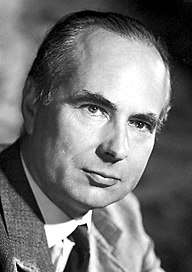 |
Andrew Fielding Huxley | 1917–2012 | United Kingdom | ||||
| 1967 | Physiology |  |
Ragnar Granit | 1900–1991 | Finland Sweden |
"for their discoveries concerning the primary physiological and chemical visual processes in the eye" | [87] |
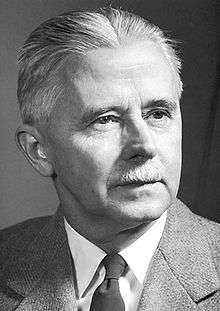 |
Haldan Keffer Hartline | 1903–1983 | United States | ||||
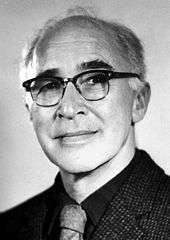 |
George Wald | 1906–1997 | United States | ||||
| 1970 | Physiology | Julius Axelrod | 1912–2004 | United States | "for their discoveries concerning the humoral transmittors in the nerve terminals and the mechanism for their storage, release and inactivation" | [86] | |
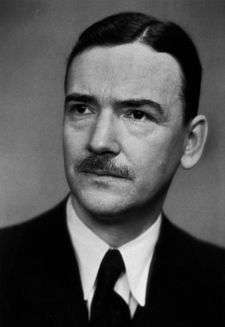 |
Ulf von Euler | 1905–1983 | Sweden | ||||
| Bernard Katz | 1911–2003 | United Kingdom | |||||
| 1981 | Physiology | 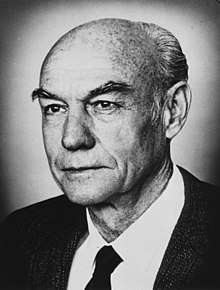 |
Roger W. Sperry | 1913–1994 | United States | "for his discoveries concerning the functional specialization of the cerebral hemispheres" | [87] |
| David H. Hubel | 1926–2013 | Canada | "for their discoveries concerning information processing in the visual system" | [87] | |||
 |
Torsten N. Wiesel | 1924– | Sweden | ||||
| 1986 | Physiology | 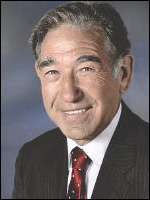 |
Stanley Cohen | 1922–2020 | United States | "for their discoveries of growth factors" | [88] |
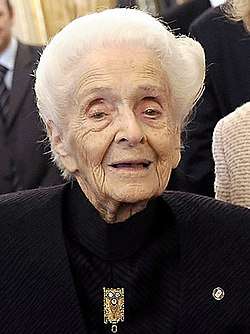 |
Rita Levi-Montalcini | 1909–2012 | Italy | ||||
| 1997 | Chemistry | 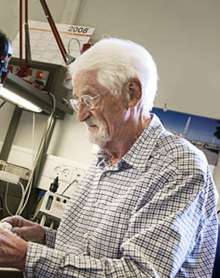 |
Jens C. Skou | 1918–2018 | Denmark | "for the first discovery of an ion-transporting enzyme, Na+, K+ -ATPase" | [89] |
| 2000 | Physiology | 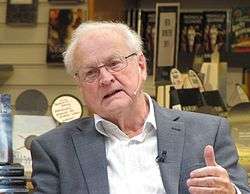 |
Arvid Carlsson | 1923–2018 | Sweden | "for their discoveries concerning signal transduction in the nervous system" | [90] |
 |
Paul Greengard | 1925–2019 | United States | ||||
 |
Eric R. Kandel | 1929– | United States | ||||
| 2003 | Chemistry |  |
Roderick MacKinnon | 1956– | United States | "for discoveries concerning channels in cell membranes [...] for structural and mechanistic studies of ion channels" | [91] |
| 2004 | Physiology |  |
Richard Axel | 1946– | United States | "for their discoveries of odorant receptors and the organization of the olfactory system" | [92] |
 |
Linda B. Buck | 1947– | United States | ||||
| 2014 | Physiology | _2014b.jpg) |
John O'Keefe | 1939– | United States United Kingdom |
"for their discoveries of cells that constitute a positioning system in the brain" | [93] |
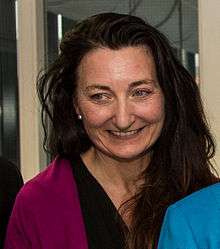 |
May-Britt Moser | 1963– | Norway | ||||
 |
Edvard I. Moser | 1962– | Norway | ||||
| 2017 | Physiology | .jpg) |
Jeffrey C. Hall | 1939– | United States | "for their discoveries of molecular mechanisms controlling the circadian rhythm" | [94] |
.jpg) |
Michael Rosbash | 1944– | United States | ||||
.jpg) |
Michael W. Young | 1949– | United States |
See also
References
- "Neuroscience". Merriam-Webster Medical Dictionary.
- Kandel, Eric R. (2012). Principles of Neural Science, Fifth Edition. McGraw-Hill Education. pp. I. Overall perspective. ISBN 978-0071390118.
- Ayd, Frank J., Jr. (2000). Lexicon of Psychiatry, Neurology and the Neurosciences. Lippincott, Williams & Wilkins. p. 688. ISBN 978-0781724685.
- Shulman, Robert G. (2013). "Neuroscience: A Multidisciplinary, Multilevel Field". Brain Imaging: What it Can (and Cannot) Tell Us About Consciousness. Oxford University Press. p. 59. ISBN 9780199838721.
- Ogawa, Hiroto; Oka, Kotaro (2013). Methods in Neuroethological Research. Springer. p. v. ISBN 9784431543305.
- Tanner, Kimberly D. (2006-01-01). "Issues in Neuroscience Education: Making Connections". CBE: Life Sciences Education. 5 (2): 85. doi:10.1187/cbe.06-04-0156. ISSN 1931-7913. PMC 1618510.
- Kandel, Eric R. (2012). Principles of Neural Science, Fifth Edition. McGraw-Hill Education. p. 5. ISBN 978-0071390118.
The last frontier of the biological sciences – their ultimate challenge – is to understand the biological basis of consciousness and the mental processes by which we perceive, act, learn, and remember.
- Mohamed W (2008). "The Edwin Smith Surgical Papyrus: Neuroscience in Ancient Egypt". IBRO History of Neuroscience. Archived from the original on 2014-07-06. Retrieved 2014-07-06.
- Herodotus (2009) [440 BCE]. The Histories: Book II (Euterpe). Translated by George Rawlinson.
- Breitenfeld, T.; Jurasic, M. J.; Breitenfeld, D. (September 2014). "Hippocrates: the forefather of neurology". Neurological Sciences. 35 (9): 1349–1352. doi:10.1007/s10072-014-1869-3. ISSN 1590-3478. PMID 25027011. S2CID 2002986.
- Plato (2009) [360 BCE]. Timaeus. Translated by George Rawlinson.
- Finger, Stanley (2001). Origins of Neuroscience: A History of Explorations into Brain Function (3rd ed.). New York: Oxford University Press, USA. pp. 3–17. ISBN 978-0-19-514694-3.
- Freemon, F. R. (23 Sep 2009). "Galen's ideas on neurological function". Journal of the History of the Neurosciences. 3 (4): 263–271. doi:10.1080/09647049409525619. ISSN 0964-704X. PMID 11618827.
- Finkelstein, Gabriel (2013). Emil du Bois-Reymond: Neuroscience, Self, and Society in Nineteenth-Century Germany. Cambridge; London: The MIT Press. pp. 72–74, 89–95. ISBN 9780262019507.
- Harrison, David W. (2015). Brain Asymmetry and Neural Systems Foundations in Clinical Neuroscience and Neuropsychology. Springer International Publishing. pp. 15–16. ISBN 978-3-319-13068-2.
- "Caton, Richard - The electric currents of the brain". echo.mpiwg-berlin.mpg.de. Retrieved 2018-12-21.
- Coenen, Anton; Edward Fine; Oksana Zayachkivska (2014). "Adolf Beck: A Forgotten Pioneer In Electroencephalography". Journal of the History of the Neurosciences. 23 (3): 276–286. doi:10.1080/0964704x.2013.867600. PMID 24735457.
- Guillery, R (Jun 2005). "Observations of synaptic structures: origins of the neuron doctrine and its current status". Philos Trans R Soc Lond B Biol Sci. 360 (1458): 1281–307. doi:10.1098/rstb.2003.1459. PMC 1569502. PMID 16147523.
- Greenblatt SH (1995). "Phrenology in the science and culture of the 19th century". Neurosurgery. 37 (4): 790–805. doi:10.1227/00006123-199510000-00025. PMID 8559310.
- Bear MF; Connors BW; Paradiso MA (2001). Neuroscience: Exploring the Brain (2nd ed.). Philadelphia: Lippincott Williams & Wilkins. ISBN 978-0-7817-3944-3.
- Kandel ER; Schwartz JH; Jessel TM (2000). Principles of Neural Science (4th ed.). New York: McGraw-Hill. ISBN 978-0-8385-7701-1.
- Cowan, W.M.; Harter, D.H.; Kandel, E.R. (2000). "The emergence of modern neuroscience: Some implications for neurology and psychiatry". Annual Review of Neuroscience. 23: 345–346. doi:10.1146/annurev.neuro.23.1.343. PMID 10845068.
- "James McGaugh". The history of neuroscience in autobiography. Volume. 4. Squire, Larry R., Society for Neuroscience. Washington DC: Society for Neuroscience. 1996. p. 410. ISBN 0916110516. OCLC 36433905.CS1 maint: others (link)
- "History - Department of Neurobiology". Archived from the original on 2019-09-27. Retrieved 2017-10-17.
- "History of IBRO". International Brain Research Organization. 2010.
- The Beginning Archived April 21, 2012, at the Wayback Machine, International Society for Neurochemistry
- "About EBBS". European Brain and Behaviour Society. 2009. Archived from the original on 2016-03-03.
- "About SfN". Society for Neuroscience.
- "How can neuroscience inform economics?" (PDF). Current Opinion in Behavioral Sciences.
- Zull, J. (2002). The art of changing the brain: Enriching the practice of teaching by exploring the biology of learning. Sterling, Virginia: Stylus Publishing, LLC
- "What is Neuroethics?". www.neuroethicssociety.org. Retrieved 2019-02-22.
- Petoft, Arian (2015-01-05). "Neurolaw: A brief introduction". Iranian Journal of Neurology. 14 (1): 53–58. ISSN 2008-384X. PMC 4395810. PMID 25874060.
- Fan, Xue; Markram, Henry (2019-05-07). "A Brief History of Simulation Neuroscience". Frontiers in Neuroinformatics. 13: 32. doi:10.3389/fninf.2019.00032. ISSN 1662-5196. PMC 6513977. PMID 31133838.
- U.S. National Institute of Neurological Disorders and Stroke. Brain basics: genes at work in the brain. Date last modified: 2018-12-27. Retrieved Feb. 4, 2019.
- The United States Department of Health and Human Services. Mental Health: A Report of the Surgeon General. "Chapter 2: The Fundamentals of Mental Health and Mental Illness" pp 38 Retrieved May 21, 2012
- Aragona M, Kotzalidis GD, Puzella A. (2013) The many faces of empathy, between phenomenology and neuroscience. Archives of Psychiatry and Psychotherapy, 4:5-12 http://www.archivespp.pl/uploads/images/2013_15_4/5Aragona_APP_4_2013.pdf
- Ofengenden, Tzofit (2014). "Memory formation and belief" (PDF). Dialogues in Philosophy, Mental and Neuro Sciences. 7 (2): 34–44.
- Gordon, Ross; Ciorciari, Joseph; Van Laer, Tom (2018). "Using EEG to examine the role of attention, working memory, emotion, and imagination in narrative transportation". European Journal of Marketing. 52: 92–117. doi:10.1108/EJM-12-2016-0881. SSRN 2892967.
- Haeusler, S.; Maass, W. (2017). "Application of modelling and nanotechnology-based approaches: The emergence of breakthroughs in theranostics of central nervous system disorders". Life Sciences. 182: 93–103. doi:10.1016/j.lfs.2017.06.001. PMID 28583367. S2CID 7598262.
- Maojo, V.; Chiesa, S.; Martin-Sanchez, F.; Kern, J.; Potamias, G.; Crespo, J.; Iglesia, D. D. L. (2011). "International Efforts in Nanoinformatics Research Applied to Nanomedicine". Methods of Information in Medicine. 50 (1): 84–95. doi:10.3414/me10-02-0012. PMID 21085742.
- Poater, A.; Saliner, A. G.; Carbó-Dorca, R.; Poater, J.; Solà, M.; Cavallo, L.; Worth, A. P. (2009). "Modeling the structure-property of nanoneedles: A journey toward nanomedicine". Journal of Computational Chemistry. 30 (2): 275–284. doi:10.1002/jcc.21041. PMID 18615420.
- Haeusler, S.; Maass, W. (2006). "A Statistical Analysis of Information-Processing Properties of Lamina-Specific Cortical Microcircuit Models". Cerebral Cortex. 17 (1): 149–162. doi:10.1093/cercor/bhj132. PMID 16481565.
- Cancès, Eric; Defranceschi, Mireille; Kutzelnigg, Werner; Le Bris, Claude; Maday, Yvon (2003-01-01). "Computational quantum chemistry: A primer". Special Volume, Computational Chemistry. Handbook of Numerical Analysis. Special Volume, Computational Chemistry. 10. Elsevier. pp. 3–270. doi:10.1016/s1570-8659(03)10003-8. ISBN 9780444512482. Retrieved 2020-04-30.
- Ghosh, S.; Matsuoka, Y.; Asai, Y.; Hsin, K.-Y.; Kitano, H. (2011). "Software for systems biology: from tools to integrated platforms". Nature Reviews Genetics. 12 (12): 821–832. doi:10.1038/nrg3096. PMID 22048662. S2CID 21037536.
- Shah, S.; Liu, Y.; Hu, W.; Gao, J. (2011). "Modeling Particle Shape-Dependent Dynamics in Nanomedicine". Journal of Nanoscience and Nanotechnology. 11 (2): 919–928. doi:10.1166/jnn.2011.3536. PMC 3050532. PMID 21399713.
- Pisanello, F. (2016). "Micro- and nanotechnologies for optical neural interfaces". Frontiers in Neuroscience. 10: 70. doi:10.3389/fnins.2016.00070. PMC 4781845. PMID 27013939.
- Alivisatos, A. P. (2013). "Nanotools for neuroscience and brain activity mapping". ACS Nano. 7 (3): 1850–1866. doi:10.1021/nn4012847. hdl:1721.1/79786. PMC 3665747. PMID 23514423.
- Pampaloni, Niccolò Paolo (2019). "Advances in Nano Neuroscience: From Nanomaterials to Nanotools". Frontiers in Neuroscience. 12: 953. doi:10.3389/fnins.2018.00953. PMC 6341218. PMID 30697140.
- Vidu, Rahman (2014). "Nanostructures: a platform for brain repair and augmentation". Frontiers in Systems Neuroscience. 8: 91. doi:10.3389/fnsys.2014.00091. PMC 4064704. PMID 24999319.
- Wu, Y. (2004). "Controlled growth and structures of molecular-scale silicon nanowires". Nano Lett. 4 (3): 433–436. Bibcode:2004NanoL...4..433W. doi:10.1021/nl035162i.
- Ahmad, Rafiq; Mahmoudi, Tahmineh; Ahn, Min-Sang; Hahn, Yoon-Bong (2018). "Recent advances in nanowires-based field-effect transistors for biological sensor applications". Biosensors and Bioelectronics. 100: 312–325. doi:10.1016/j.bios.2017.09.024. PMC 7126762. PMID 28942344.
- Vidu, Rahman (2014). "Nanostructures: a platform for brain repair and augmentation". Frontiers in Systems Neuroscience. 8. doi:10.3389/fnsys.2014.00091. PMC 4064704. PMID 24999319.
- Lepage M (2010). "Research at the Brain Imaging Centre". Douglas Mental Health University Institute. Archived from the original on March 5, 2012.
- Gordon E (2003). "Integrative neuroscience". Neuropsychopharmacology. 28 Suppl 1: S2-8. doi:10.1038/sj.npp.1300136. PMID 12827137.
- Dong X (2018). "Current Strategies for Drug Delivery". Theranostics. 8 Suppl1 (6): 1481–1493. doi:10.7150/thno.21254. PMC 5858162. PMID 29556336.
- Gray J (2015). "Viral vectors and delivery strategies for CNS gene therapy". Ther Deliv. 10 Suppl1 (4): 517–534. doi:10.4155/tde.10.50. PMC 4509525. PMID 22833965.
- Landry, Markita. CBE 182Nanoscience and Engineering Biotechnology (Fall2018 (PDF) (Speech). Lecture. Retrieved April 30, 2020.
- Kumar A (2017). "Nanotechnology for Neuroscience: Promising Approaches for Diagnostics, Therapeutics and Brain Activity Mapping". Adv Funct Mater. 27 Suppl1 (39): 1700489. doi:10.1002/adfm.201700489. PMC 6404766. PMID 30853878.
- Panagiotou Stavros; Saha Sikha (2015). "Therapeutic benefits of nanoparticles in stroke". Frontiers in Neuroscience. 9: 182. doi:10.3389/fnins.2015.00182. PMC 4436818. PMID 26041986.
- Paige P (2018). "Magnetic Drug Delivery: Where the Field is Going". Frontiers in Neuroscience. 6 Suppl1: 619. Bibcode:2018FrCh....6..619P. doi:10.3389/fchem.2018.00619. PMC 6297194. PMID 30619827.
- Panksepp J (1990). "A role for "affective neuroscience" in understanding stress: the case of separation distress circuitry". In Puglisi-Allegra S; Oliverio A (eds.). Psychobiology of Stress. Dordrecht, Netherlands: Kluwer Academic. pp. 41–58. ISBN 978-0-7923-0682-5.
- Chiao, J.Y. & Ambady, N. (2007). Cultural neuroscience: Parsing universality and diversity across levels of analysis. In Kitayama, S. and Cohen, D. (Eds.) Handbook of Cultural Psychology, Guilford Press, New York, pp. 237-254.
- Shepherd, Gordon M. 1933- (2013-07-16). Neurogastronomy : how the brain creates flavor and why it matters. ISBN 9780231159111. OCLC 882238865.
- "Financial and organizational highlights" (PDF). Society for Neuroscience. Archived from the original (PDF) on September 15, 2012.
- "International Brain Initiative | The Kavli Foundation". www.kavlifoundation.org. Retrieved 2019-05-29.
- Rommelfanger, Karen S.; Jeong, Sung-Jin; Ema, Arisa; Fukushi, Tamami; Kasai, Kiyoto; Ramos, Khara M.; Salles, Arleen; Singh, Ilina; Amadio, Jordan (2018). "Neuroethics Questions to Guide Ethical Research in the International Brain Initiatives". Neuron. 100 (1): 19–36. doi:10.1016/j.neuron.2018.09.021. PMID 30308169.
- "About the International Brain Bee". The International Brain Bee.
- "Brain Facts: A Primer on the Brain and Nervous System". Society for Neuroscience.
- "Neuroscience Core Concepts: The Essential Principles of Neuroscience". Society for Neuroscience. Archived from the original on April 15, 2012.
- "Brain Awareness Week Campaign". The Dana Foundation.
- "Official CIHR Canadian National Brain Bee Website". Archived from the original on May 30, 2014. Retrieved 24 September 2014.
- "Archived copy". Archived from the original on 2018-08-26. Retrieved 2018-08-26.CS1 maint: archived copy as title (link)
- Goswami U (2004). "Neuroscience, education and special education". Br J Spec Educ. 31 (4): 175–183. doi:10.1111/j.0952-3383.2004.00352.x.
- "The SEPA Program". NIH. Archived from the original on September 20, 2011. Retrieved September 23, 2011.
- "About Education and Human Resources". NSF. Retrieved September 23, 2011.
- "The Nobel Prize in Physiology or Medicine 1904". Nobel Foundation. Retrieved 28 July 2007.
- "The Nobel Prize in Physiology or Medicine 1906". Nobel Foundation. Retrieved 28 July 2007.
- "The Nobel Prize in Physiology or Medicine 1914". Nobel Foundation. Retrieved 28 July 2007.
- "The Nobel Prize in Physiology or Medicine 1932". Nobel Foundation. Retrieved 28 July 2007.
- "The Nobel Prize in Physiology or Medicine 1936". Nobel Foundation. Retrieved 28 July 2007.
- "The Nobel Prize in Physiology or Medicine 1938". Nobel Foundation. Archived from the original on 30 September 2007. Retrieved 28 July 2007.
- "The Nobel Prize in Physiology or Medicine 1944". Nobel Foundation. Retrieved 28 July 2007.
- "The Nobel Prize in Physiology or Medicine 1949". Nobel Foundation. Retrieved 28 July 2007.
- "The Nobel Prize in Physiology or Medicine 1957". Nobel Foundation. Retrieved 28 July 2007.
- "The Nobel Prize in Physiology or Medicine 1961". Nobel Foundation. Retrieved 28 July 2007.
- "The Nobel Prize in Physiology or Medicine 1970". Nobel Foundation.
- "The Nobel Prize in Physiology or Medicine 1981". Nobel Foundation.
- "The Nobel Prize in Physiology or Medicine 1986". Nobel Foundation. Archived from the original on 3 February 2014. Retrieved 28 July 2007.
- "The Nobel Prize in Chemistry 1997". Nobel Foundation. Retrieved 1 July 2019.
- "The Nobel Prize in Physiology or Medicine 2000". Nobel Foundation. Retrieved 28 July 2007.
- "The Nobel Prize in Chemistry 2003". Nobel Foundation. Retrieved 4 April 2019.
- "The Nobel Prize in Physiology or Medicine 2004". Nobel Foundation. Archived from the original on 19 August 2007. Retrieved 28 January 2020.
- "The Nobel Prize in Physiology or Medicine 2014". Nobel Foundation. Retrieved 7 October 2013.
- "The Nobel Prize in Physiology or Medicine 2017". Nobel Foundation. Retrieved 2 October 2017.
Further reading
- Bear, M. F.; B. W. Connors; M. A. Paradiso (2006). Neuroscience: Exploring the Brain (3rd ed.). Philadelphia: Lippincott. ISBN 978-0-7817-6003-4.
- Binder, Marc D.; Hirokawa, Nobutaka; Windhorst, Uwe, eds. (2009). Encyclopedia of Neuroscience. Springer. ISBN 978-3-540-23735-8.
- Kandel, ER; Schwartz JH; Jessell TM (2012). Principles of Neural Science (5th ed.). New York: McGraw-Hill. ISBN 978-0-8385-7701-1.
- Squire, L. et al. (2012). Fundamental Neuroscience, 4th edition. Academic Press; ISBN 0-12-660303-0
- Byrne and Roberts (2004). From Molecules to Networks. Academic Press; ISBN 0-12-148660-5
- Sanes, Reh, Harris (2005). Development of the Nervous System, 2nd edition. Academic Press; ISBN 0-12-618621-9
- Siegel et al. (2005). Basic Neurochemistry, 7th edition. Academic Press; ISBN 0-12-088397-X
- Rieke, F. et al. (1999). Spikes: Exploring the Neural Code. The MIT Press; Reprint edition ISBN 0-262-68108-0
- section.47 Neuroscience 2nd ed. Dale Purves, George J. Augustine, David Fitzpatrick, Lawrence C. Katz, Anthony-Samuel LaMantia, James O. McNamara, S. Mark Williams. Published by Sinauer Associates, Inc., 2001.
- section.18 Basic Neurochemistry: Molecular, Cellular, and Medical Aspects 6th ed. by George J. Siegel, Bernard W. Agranoff, R. Wayne Albers, Stephen K. Fisher, Michael D. Uhler, editors. Published by Lippincott, Williams & Wilkins, 1999.
- Andreasen, Nancy C. (March 4, 2004). Brave New Brain: Conquering Mental Illness in the Era of the Genome. Oxford University Press. ISBN 978-0-19-514509-0.
- Damasio, A. R. (1994). Descartes' Error: Emotion, Reason, and the Human Brain. New York, Avon Books. ISBN 0-399-13894-3 (Hardcover) ISBN 0-380-72647-5 (Paperback)
- Gardner, H. (1976). The Shattered Mind: The Person After Brain Damage. New York, Vintage Books, 1976 ISBN 0-394-71946-8
- Goldstein, K. (2000). The Organism. New York, Zone Books. ISBN 0-942299-96-5 (Hardcover) ISBN 0-942299-97-3 (Paperback)
- Lauwereyns, Jan (February 2010). The Anatomy of Bias: How Neural Circuits Weigh the Options. Cambridge, Massachusetts: The MIT Press. ISBN 978-0-262-12310-5.
- Subhash Kak, The Architecture of Knowledge: Quantum Mechanics, Neuroscience, Computers and Consciousness, Motilal Banarsidass, 2004, ISBN 81-87586-12-5
- Llinas R. (2001). I of the vortex: from neurons to self MIT Press. ISBN 0-262-12233-2 (Hardcover) ISBN 0-262-62163-0 (Paperback)
- Luria, A. R. (1997). The Man with a Shattered World: The History of a Brain Wound. Cambridge, Massachusetts, Harvard University Press. ISBN 0-224-00792-0 (Hardcover) ISBN 0-674-54625-3 (Paperback)
- Luria, A. R. (1998). The Mind of a Mnemonist: A Little Book About A Vast Memory. New York, Basic Books, Inc. ISBN 0-674-57622-5
- Medina, J. (2008). Brain Rules: 12 Principles for Surviving and Thriving at Work, Home, and School. Seattle, Pear Press. ISBN 0-9797777-0-4 (Hardcover with DVD)
- Pinker, S. (1999). How the Mind Works. W. W. Norton & Company. ISBN 0-393-31848-6
- Pinker, S. (2002). The Blank Slate: The Modern Denial of Human Nature. Viking Adult. ISBN 0-670-03151-8
- Robinson, D. L. (2009). Brain, Mind and Behaviour: A New Perspective on Human Nature (2nd ed.). Dundalk, Ireland: Pontoon Publications. ISBN 978-0-9561812-0-6.
- Penrose, R., Hameroff, S. R., Kak, S., & Tao, L. (2011). Consciousness and the universe: Quantum physics, evolution, brain & mind. Cambridge, MA: Cosmology Science Publishers.
- Ramachandran, V. S. (1998). Phantoms in the Brain. New York, HarperCollins. ISBN 0-688-15247-3 (Paperback)
- Rose, S. (2006). 21st Century Brain: Explaining, Mending & Manipulating the Mind ISBN 0-09-942977-2 (Paperback)
- Sacks, O. The Man Who Mistook His Wife for a Hat. Summit Books ISBN 0-671-55471-9 (Hardcover) ISBN 0-06-097079-0 (Paperback)
- Sacks, O. (1990). Awakenings. New York, Vintage Books. (See also Oliver Sacks) ISBN 0-671-64834-9 (Hardcover) ISBN 0-06-097368-4 (Paperback)
- Encyclopedia:Neuroscience Scholarpedia Expert articles
- Sternberg, E. (2007) Are You a Machine? The Brain, the Mind and What it Means to be Human. Amherst, New York: Prometheus Books.
- Churchland, P. S. (2011) Braintrust: What Neuroscience Tells Us about Morality. Princeton University Press. ISBN 0-691-13703-X
- Selvin, Paul (2014). "Hot Topics presentation: New Small Quantum Dots for Neuroscience". SPIE Newsroom. doi:10.1117/2.3201403.17.
External links
| Wikiversity has learning resources about Topic: Neuroscience |
| Wikibooks has a book on the topic of: Neuroscience |
| Look up neuroscience in Wiktionary, the free dictionary. |
| Wikimedia Commons has media related to neuroscience. |
- Neuroscience on In Our Time at the BBC
- Neuroscience Information Framework (NIF)
- Neurobiology at Curlie
- American Society for Neurochemistry
- British Neuroscience Association (BNA)
- Federation of European Neuroscience Societies
- Neuroscience Online (electronic neuroscience textbook)
- HHMI Neuroscience lecture series - Making Your Mind: Molecules, Motion, and Memory
- Société des Neurosciences
- Neuroscience For Kids